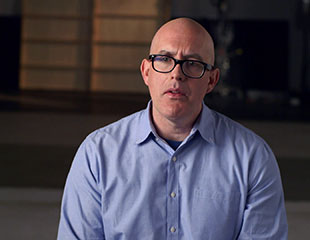PTSD: By the Numbers
3-minute read
PTSD: By the Numbers
3-minute read
Each year in the U.S., roughly 8 million adults suffer from posttraumatic stress disorder.
They include Veterans like Bryan, who found himself sleeping with a knife in his hand and a gun clutched against his chest. “Any noise that would happen,” he remembers, “I would jump up.”
And they include Marine Corps Veterans like James, who found himself feeling disconnected — and then later, seething with rage. “I was angry on a level that I had never been before in my life,” he says. “I was filled with hate.”
PTSD is a reaction to a trauma or a life-threatening event. For some, that reaction can mean reliving the event over and over in their mind. For others, it can mean withdrawing from friends and family, or feeling numb, or feeling hyperaware of their surroundings.
The statistics for PTSD in Veterans — and the general population — paint a revealing picture of trauma, stress, and the rates of PTSD among civilians and Veterans of various service eras.
For example, 7 to 8 percent of the general U.S. population will have PTSD at some point in their lives.
Here are five more numbers that help tell the story of PTSD:
50
About 50 percent of women and 60 percent of men overall will experience at least one trauma in their lifetime. For the general public, this may include surviving or witnessing a motor vehicle accident. For Veterans, this may mean surviving an IED explosion or an accident during a training exercise, or witnessing the death or injury of a buddy.
10
Roughly 10 percent of women overall will develop PTSD at some point in their lives. That’s compared to 4 percent of men. (Learn more about women, trauma, and PTSD.)
12
12 percent of Gulf War (Desert Storm) Veterans experience PTSD each year. That number rises to about 15 percent among Vietnam Veterans and as high as 11 to 20 percent for Veterans of operations Iraqi Freedom and Enduring Freedom. There is historical and anecdotal evidence of PTSD affecting Veterans of wars before these as well. In the World War I era, PTSD was known more commonly as “shell shock,” and as far back as the Civil War, symptoms were referred to as “soldier’s heart” and “irritable heart.”
23
Military sexual trauma can be another cause of PTSD. Among Veterans who use VA health care, 23 percent of women reported being sexually assaulted while in the military. Fifty-five percent of women and 38 percent of men in VA care also reported experiencing sexual harassment. (Learn more about military sexual trauma.)
200
VA operates nearly 200 specialized programs for the treatment of PTSD. Are you experiencing signs of PTSD? Find treatment programs and options that are close to you.

